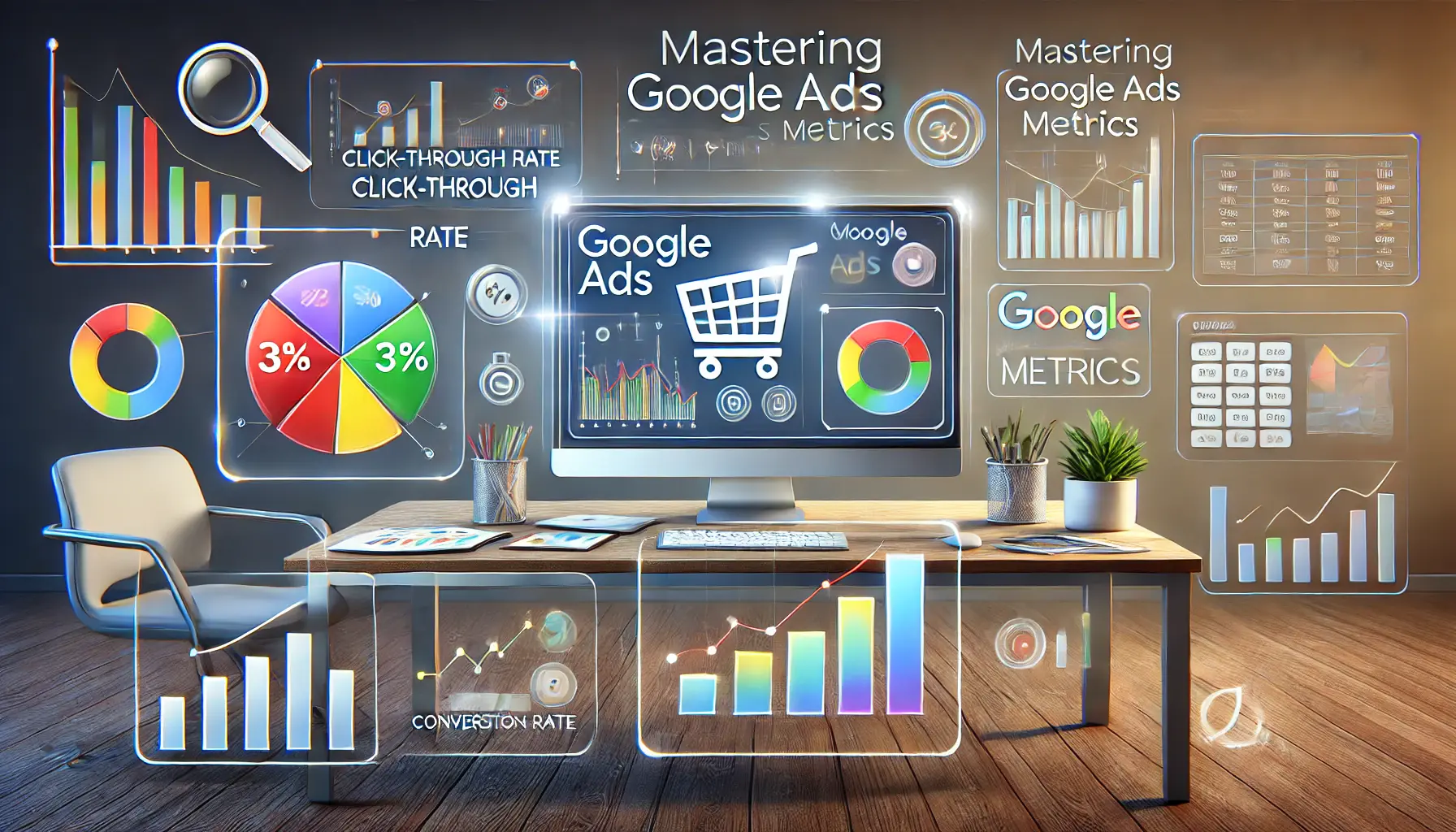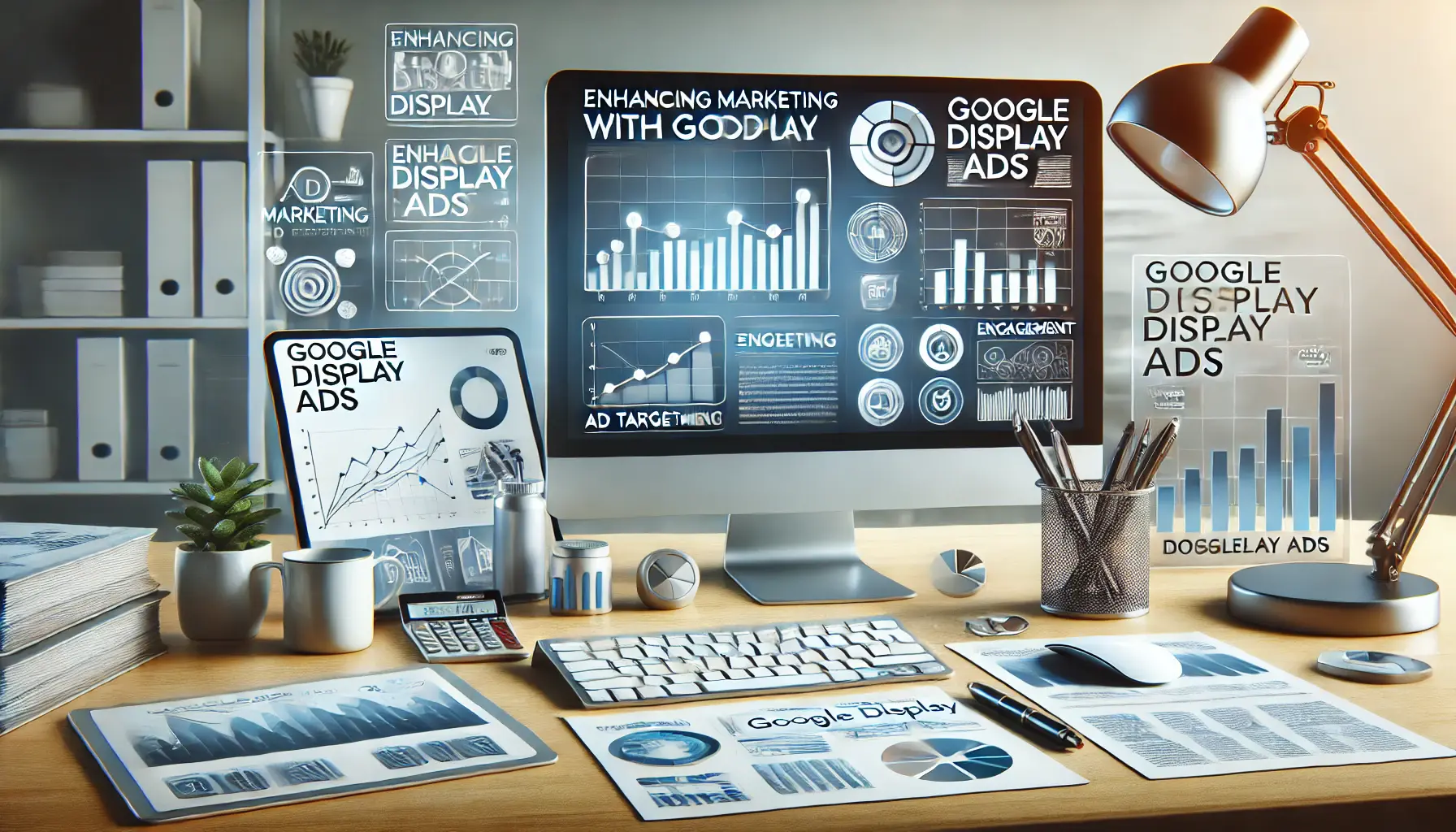In today’s digital marketing landscape, understanding and leveraging engagement metrics properly is the key to the success of your display advertising campaigns.
These metrics give insight into how an audience interacts with your ad, thus enabling you to optimize strategies and achieve better results.
Let’s dive deeper into understanding the importance of using engagement metrics in display advertising and key metrics you should track for ad success.
- Understanding Engagement Metrics in Display Advertising
- Key Engagement Metrics to Monitor for Ad Success
- Strategies to Enhance Engagement Metrics
- Common Pitfalls in Measuring Engagement Metrics
- Emerging Trends in Engagement Metrics for Display Advertising
- Conclusion: Mastering Engagement Metrics for Display Advertising Success
- Frequently Asked Questions about Engagement Metrics in Display Advertising
Understanding Engagement Metrics in Display Advertising
Engagement metrics are quantifiable measures that reflect how users interact with your display ads.
They go beyond mere impressionsThe total number of times an ad is displayed to users. and clicks, offering a deeper understanding of user behavior and ad effectiveness.
By analyzing these metrics, you can gauge the true impact of your advertising efforts and make informed decisions to enhance performance.

A visual depiction of Click-Through Rate (CTR) in digital marketing.
Click-Through Rate (CTR)
The major metric of engagement includes the Click-Through Rate (CTRShort for Click-Through Rate, a metric indicating the percentage of users who clicked on an ad after viewing it.), which refers to the percentage of users who click on your ad after viewing it.
A high CTR signals that your ad is creative and relevant to your target audience.
However, you should not stop at CTR if you want to get an overall picture of the engagement metrics.

A visual representation of Engagement Rate in digital marketing.
Engagement Rate
Another key metric is the Engagement Rate, representing the rate of interactions users make with your ad, such as clicking on it, sharing, commenting, or other forms of engagement.
It helps determine how well your ad is engaging with viewers and encouraging them to take action.

A visual representation of Conversion Rate in digital marketing.
Conversion Rate
Most importantly, the Conversion Rate shows how many people completed an action intended by you—for example, purchasing something or subscribing to your newsletter—after viewing your advertisement.
You can track the Conversion Rate to evaluate the effectiveness of the ad in driving results.
By understanding these engagement metrics, you will know what is working in your display ad campaigns and what is not.
Pay attention to these key indicators, and you’ll be refining your campaigns in a way that better suits your audience’s needs and preferences, ultimately leading to more success in your digital marketing efforts.
Engagement metrics provide a deeper understanding of user behavior and ad effectiveness, helping marketers make data-driven decisions to enhance campaign performance.

A visual representation of key engagement metrics for ad success in digital marketing.
Key Engagement Metrics to Monitor for Ad Success
To ensure the effectiveness of your display advertising campaigns, it’s essential to monitor specific engagement metrics that provide insights into user interactions and campaign performance.
Here are some crucial metrics to consider:

A visual representation of Click-Through Rate (CTR) in digital marketing.
1. Click-Through Rate (CTR)
CTR measures the percentage of users who click on your ad after viewing it.
A higher CTR indicates that your ad is compelling and relevant to your target audience.
Monitoring CTR helps assess the immediate response to your ads and the effectiveness of your creative elements.

A visual representation of Engagement Rate in digital marketing.
2. Engagement Rate
This metric evaluates the level of interaction users have with your ad, including clicks, shares, comments, and other forms of engagement.
A higher engagement rate signifies that your ad resonates well with viewers, encouraging them to interact with your content.

A visual representation of Conversion Rate in digital marketing.
3. Conversion Rate
Conversion rate indicates the percentage of users who complete a desired action, such as making a purchase or subscribing to a newsletter, after engaging with your ad.
Tracking this metric helps determine the effectiveness of your ad in driving meaningful outcomes.

A visual representation of Cost Per Click (CPC) in digital marketing.
4. Cost Per Click (CPC)
CPC measures the amount you pay each time a user clicks on your ad.
Monitoring CPCShort for Cost Per Click, a metric that measures the cost of each click on an ad. helps you understand the cost-effectiveness of your campaigns and allows for budget optimization to achieve better returns on investment.

A visual representation of Return on Ad Spend (ROAS) in digital marketing.
5. Return on Ad Spend (ROAS)
ROAS is the revenue generated for every dollar spent on ads.
A higher ROASShort for Return on Ad Spend, a metric that measures the revenue generated for every dollar spent on advertising. means the profitability of the campaign is high, making this metric essential in assessing the overall effectiveness of your advertising efforts.

A visual representation of Impressions and Reach in digital marketing.
6. Impressions and Reach
Impressions record the total number of views your ad receives, while reachThe total number of unique users who have seen an ad. indicates the number of unique users who have viewed your ad.
These metrics help you understand how well your campaigns are building visibility and awareness.
By closely monitoring these engagement metrics, you will gain valuable insights to enhance your display advertising performance and make informed decisions to optimize your campaigns for better results.
Tracking metrics like CTR, engagement rate, and conversion rate is essential for optimizing display ad campaigns and ensuring meaningful audience interactions.

A visual representation of strategies to enhance engagement metrics in digital marketing.
Strategies to Enhance Engagement Metrics
Improving your display advertising engagement metrics is essential for achieving better campaign performance.
Here are some effective strategies to consider:
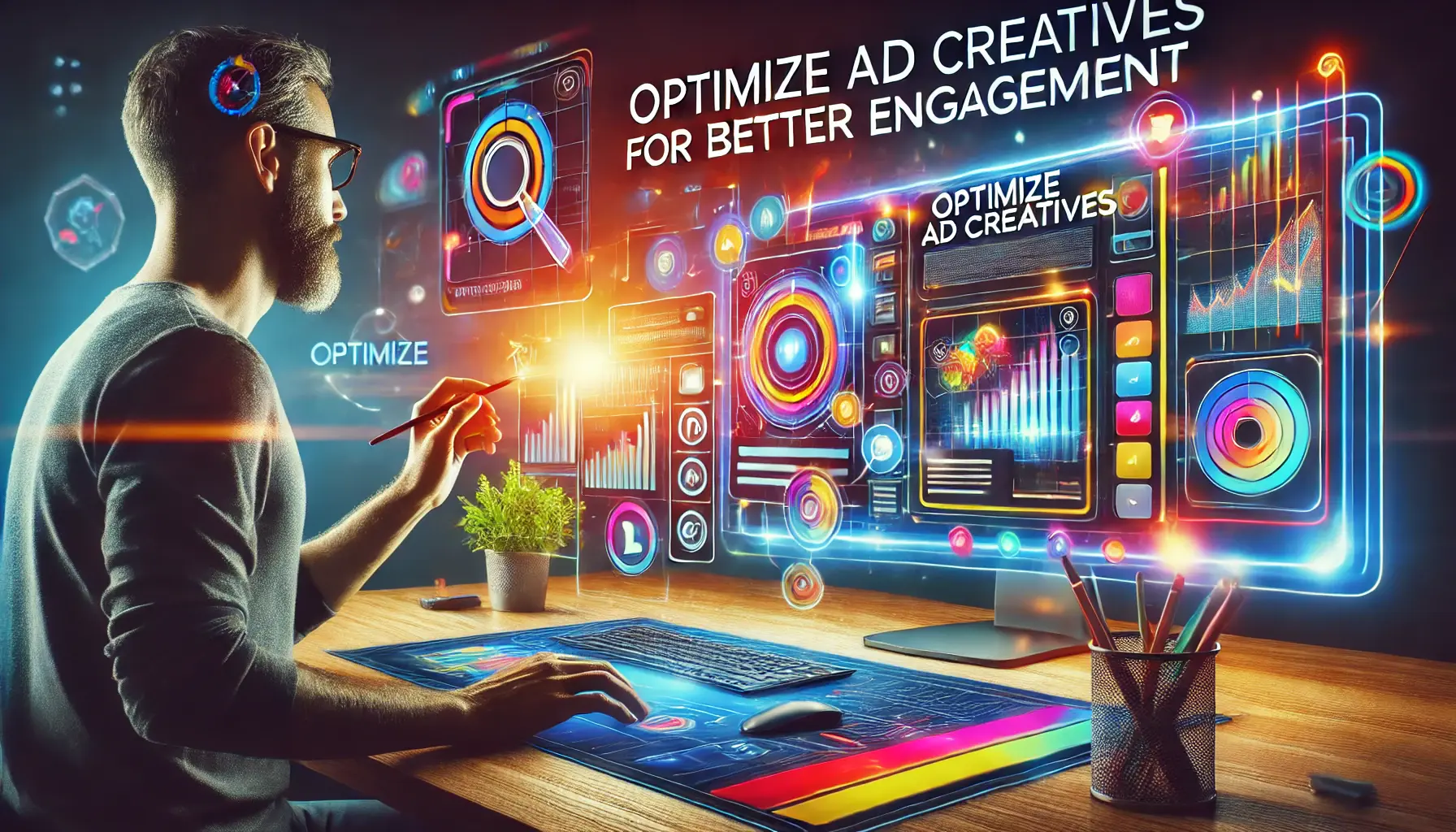
A visual representation of optimizing ad creatives for better engagement in digital marketing.
1. Optimize Ad Creatives for Better Engagement
Creating visually appealing and relevant ad creatives can significantly boost user engagement.
Consider the following approaches:
- Enhance Ad Creative: Focus on creating visually compelling and interactive ad content that captures attention and encourages interaction.
- Use Rich Media Formats: Incorporate rich media elements like videos, animations, or carousels to increase engagement with the ad format.

A visual representation of targeting the right audience segments in digital marketing.
2. Target the Right Audience Segments
Ensuring that your ads are served to the most relevant audience is critical.
Employ these strategies:
- Audience Targeting: Use advanced targeting options to make sure the ads show up for users most likely to engage.
- Contextual Relevance: Place advertisements in contexts related to user interests to encourage greater engagement.
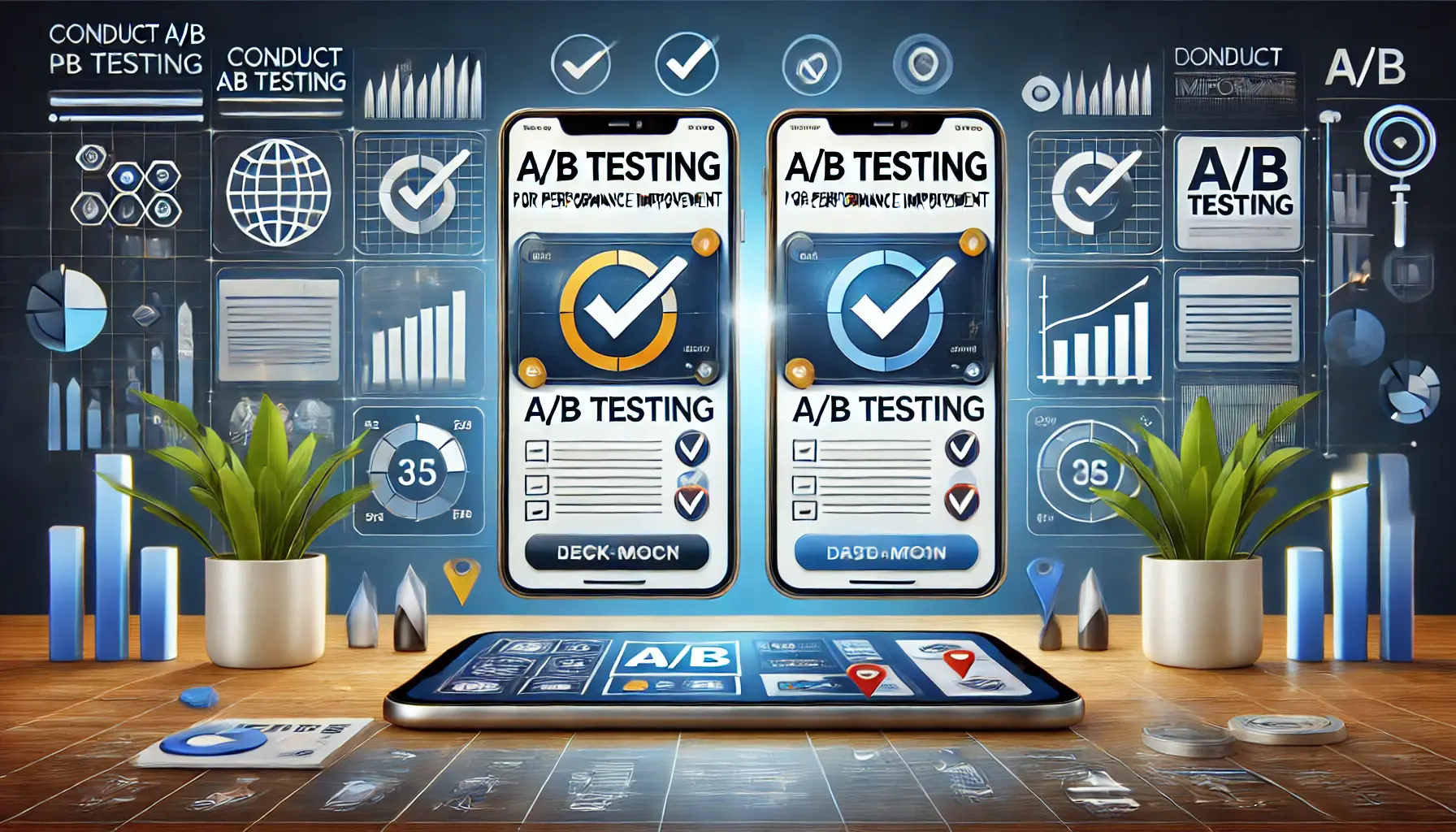
A visual representation of A/B testing for performance improvement in digital marketing.
3. Conduct A/B Testing for Performance Improvement
Regularly testing different ad variations helps identify what resonates best with your audience.
Consider the following:
- Ad Variations: Test different headlines, images, and calls-to-action to determine the most effective combinations.
- Performance Analysis: Analyze the results to make data-driven decisions for future campaigns.

A visual representation of leveraging data analytics for informed decisions in digital marketing.
4. Leverage Data Analytics for Informed Decisions
Data analytics will help you track your ad performance and identify areas for improvement.
Here are some practices to apply:
- Performance Metrics: Track key metrics such as CTR, engagement rate, and conversion rate to measure ad performance.
- Optimization: Use insights from data analysis to refine targeting, ad creative, and overall strategy.
By implementing these strategies, you can enhance your engagement metrics and run successful display advertising campaigns.
Implementing strategies like A/B testing, audience targeting, and leveraging data analytics can significantly improve ad engagement and campaign performance.

A visual representation of the common pitfalls in measuring engagement metrics in digital marketing.
Common Pitfalls in Measuring Engagement Metrics
Accurately measuring engagement metrics is crucial for the success of your display advertising campaigns.
However, several common pitfalls can lead to misinterpretation of data and suboptimal decision-making.
Being aware of these pitfalls can help you avoid them and enhance your campaign performance.

A visual representation of the overemphasis on Click-Through Rates (CTR) in digital marketing.
1. Overemphasis on Click-Through Rates (CTR)
While CTR is a valuable indicator of immediate response, relying solely on this metric can be misleading.
A high CTR does not necessarily translate to meaningful engagement or conversions.
It’s essential to consider other metrics, such as conversion rates and engagement duration, to gain a comprehensive understanding of ad effectiveness.

A visual representation of neglecting post-click user behavior in digital marketing.
2. Neglecting Post-Click User Behavior
Focusing only on the initial click overlooks all the other steps users take after landing on your website.
Analyzing post-click behavior, such as time on site, pages visited, and conversion actions, can provide a more rounded understanding of user engagement and the quality of traffic your ads drive to your site.

A visual representation of not considering the placement effect in digital marketing.
3. Not Considering the Placement Effect
Ad placement significantly influences engagement metrics.
Ads placed in irrelevant contexts or on low-quality websites may receive impressions without genuine user interest, leading to inflated metrics that don’t reflect true engagement.
Ensure your ads are displayed on platforms that align with your target audience’s interests.

A visual representation of failing to consider viewability standards in digital marketing.
4. Failing to Consider Viewability Standards
Impression measurements, if calculated without viewability in mind, might lead to improper judgment of the ad’s performance.
An ad could be counted as an impression even though it wasn’t fully visible to the user.
Apply viewability standards to ensure your ads are seen, providing a more realistic measure of ad engagement.
By paying attention to these common pitfalls, you can achieve a more accurate measure of your engagement metrics, which ultimately means better decisions and improved display advertising campaigns.
Avoid overemphasizing CTR, neglecting post-click behavior, and disregarding viewability standards to ensure accurate engagement metric analysis.

A visual representation of emerging trends in engagement metrics for display advertising.
Emerging Trends in Engagement Metrics for Display Advertising
As the digital advertising landscape evolves, so do the methods for measuring and enhancing engagement metrics in display advertising.
Staying informed about these emerging trends is crucial for optimizing campaign performance and maintaining a competitive edge.

A visual representation of the integration of Artificial Intelligence and Machine Learning in digital marketing.
1. Integration of Artificial Intelligence and Machine Learning
Artificial Intelligence (AIShort for Artificial Intelligence, a field of computer science focused on creating systems capable of performing tasks that typically require human intelligence.) and Machine Learning (MLShort for Machine Learning, a subset of AI focused on systems that learn and improve from data without being explicitly programmed.) are revolutionizing how engagement metrics are measured and improved.
These technologies analyze vast datasets to identify patterns and predict user behavior, enabling more personalized and effective ad targeting.
By leveraging AI and ML, advertisers can optimize engagement metrics in real-time, enhancing overall campaign performance.

A visual representation of the emphasis on attention metrics in digital marketing.
2. Emphasis on Attention Metrics
Attention metrics complement traditional metrics like CTR, indicating the quality of user engagement.
Attention metrics consider both:
- Active Attention: The direct interaction of users with the ad.
- Passive Attention: The peripheral awareness of users about the ad.
These subtle nuances help advertisers create better content and make wiser ad placement decisions.

A visual representation of the rise of interactive ad formats in digital marketing.
3. Rise of Interactive Ad Formats
Interactive ad formats, such as expandable ads and in-feed video ads, are gaining popularity due to their ability to engage users more effectively.
These formats encourage user interaction, leading to higher engagement metrics and better campaign outcomes.
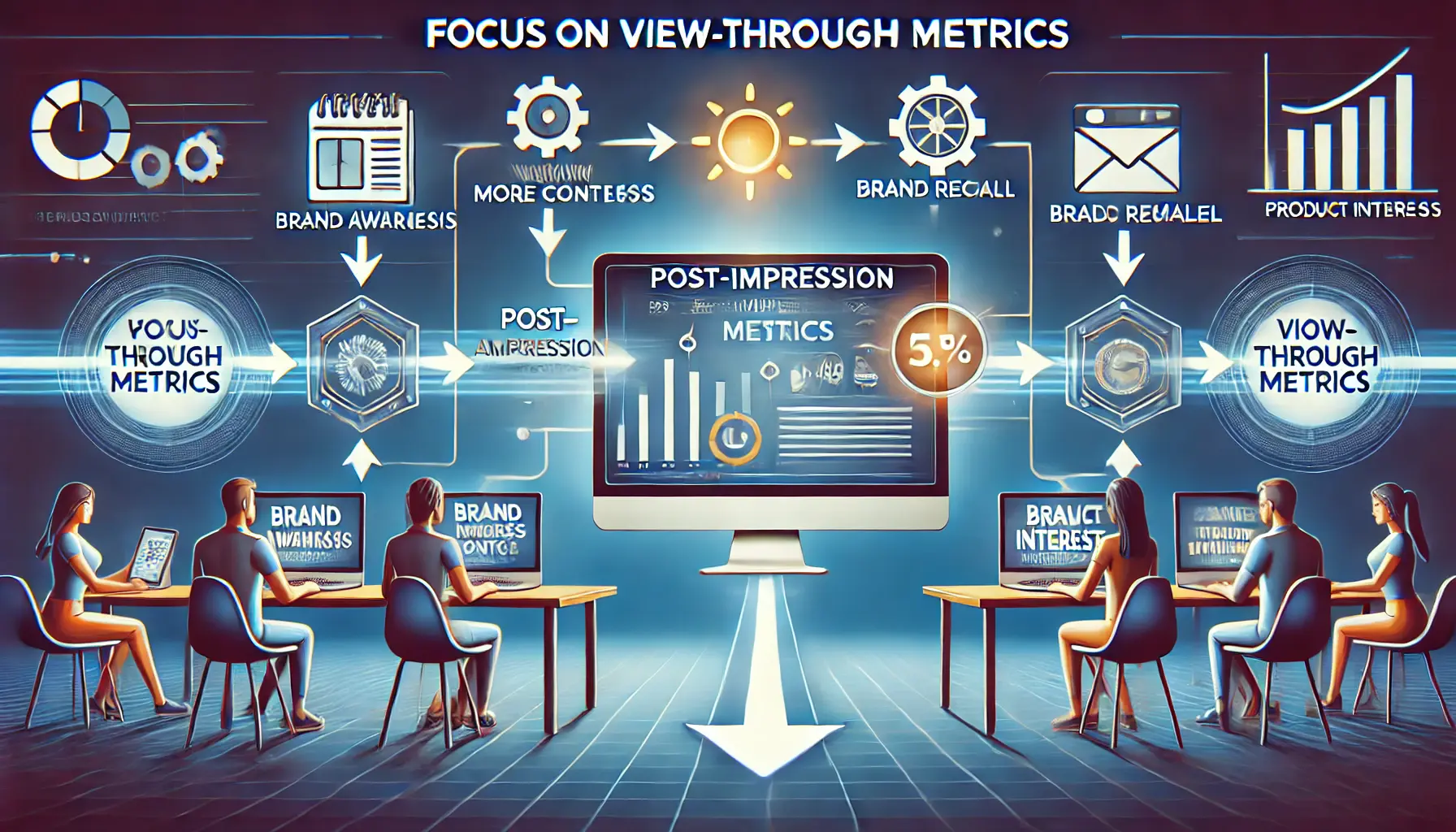
A visual representation of focusing on view-through metrics in digital marketing.
4. Focus on View-Through Metrics
View-through rate (VTRShort for View-Through Rate, a metric indicating post-impression responses, such as brand awareness and engagement.) refers to the responses that occur post-impression, providing insights into the performance of the ad beyond initial clicks.
Monitoring VTR helps understand how well the ad is driving brand awareness and affecting user behavior over time.
By embracing these emerging trends, advertisers can gain a more comprehensive understanding of their engagement metrics and make more informed decisions to drive successful display advertising campaigns.
Trends like AI integration, attention metrics, and interactive ad formats are reshaping how engagement is measured and optimized in digital advertising.
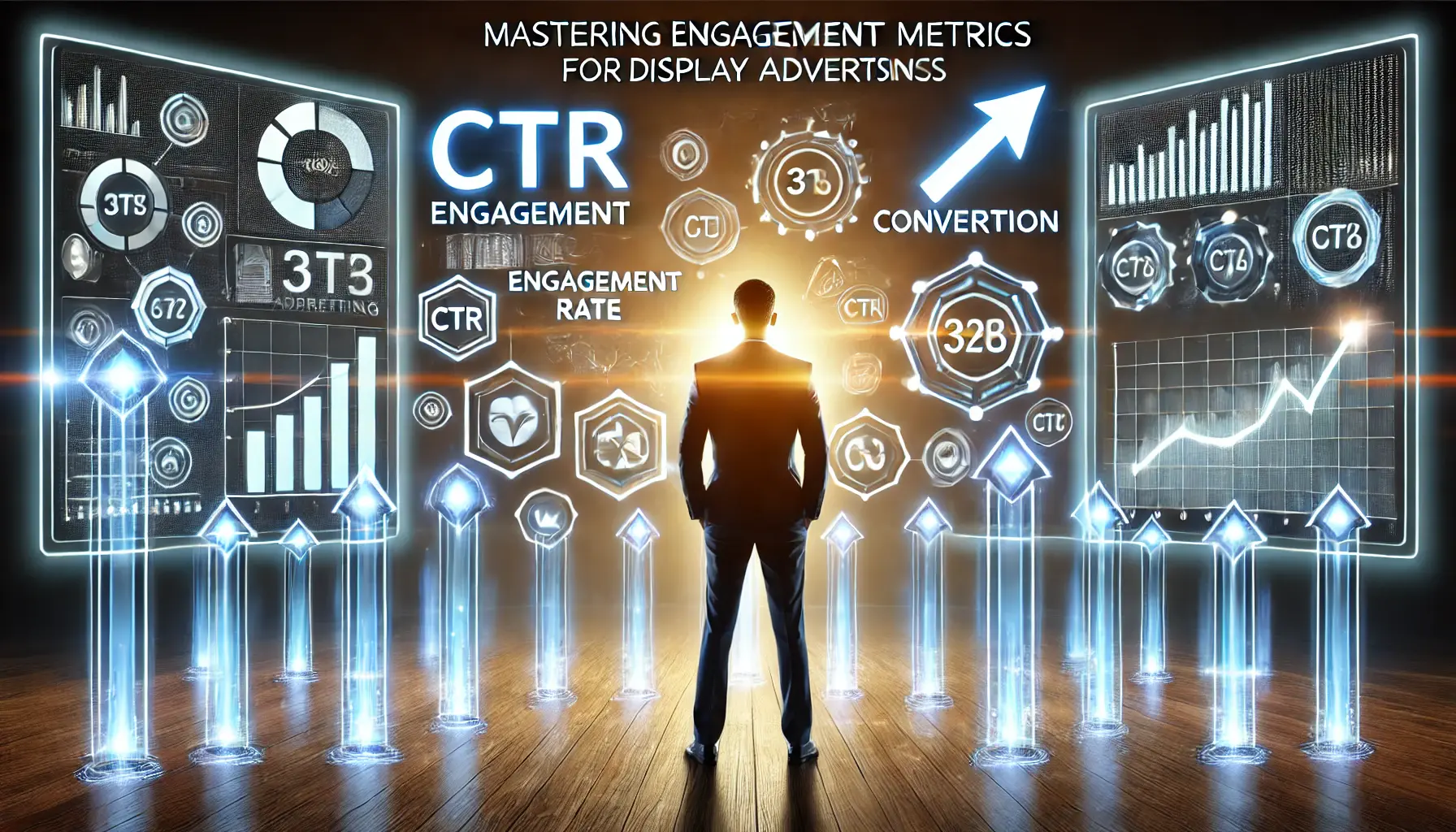
A visual representation of mastering engagement metrics for display advertising success.
Conclusion: Mastering Engagement Metrics for Display Advertising Success
Engagement metrics are at the heart of effective display advertising campaigns, serving as the compass that guides marketers toward informed decisions and optimized performance.
By understanding, monitoring, and enhancing these metrics, advertisers can maximize their reach, foster meaningful interactions, and achieve their business objectives.
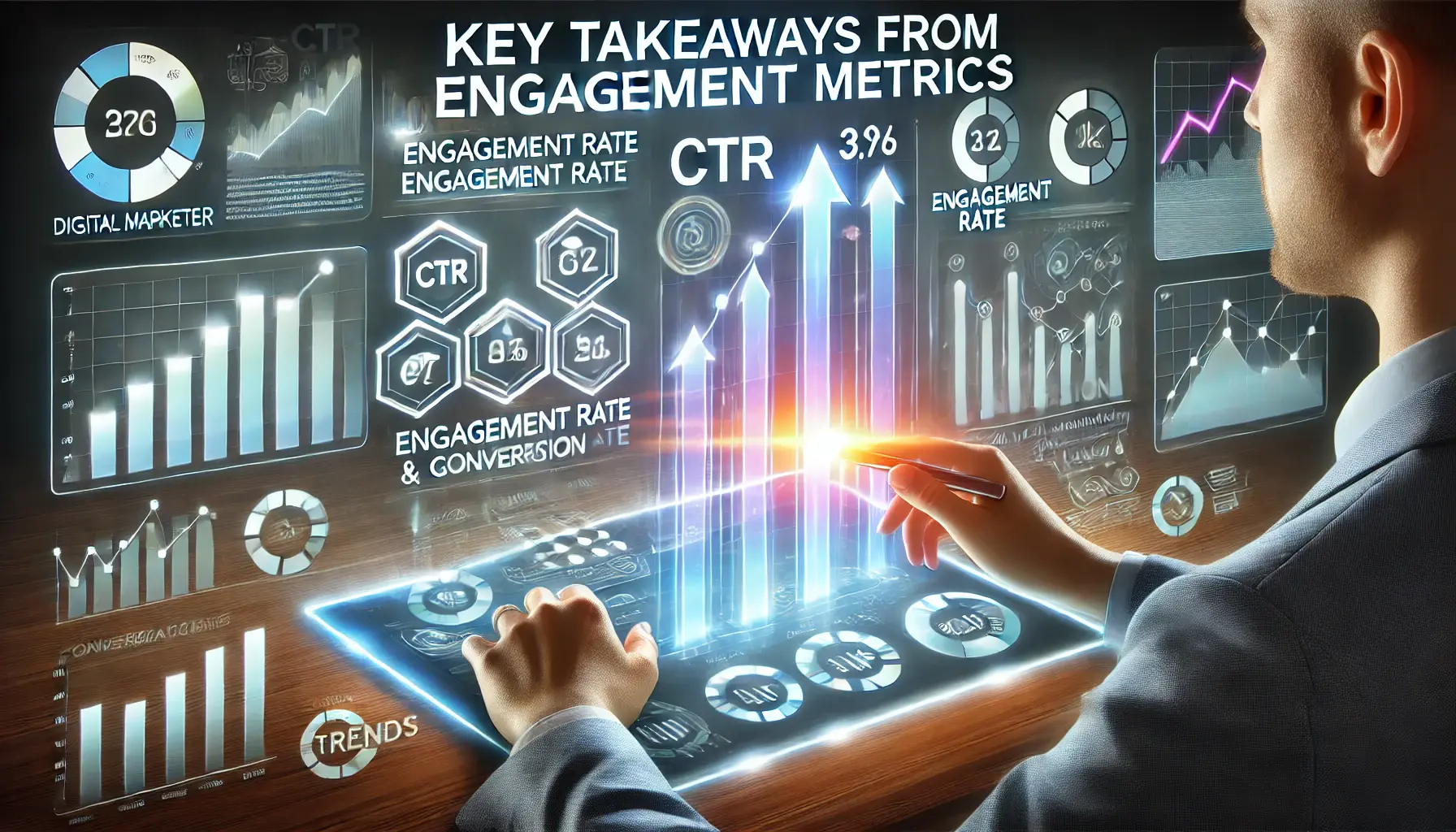
A visual representation of key takeaways from engagement metrics in digital advertising.
Key Takeaways from Engagement Metrics
In this article, we have discussed the basics of engagement metrics, their importance, and ways to improve them.
Here are key takeaways to keep in mind:
- Understanding the Metrics: CTR, engagement rate, and conversion rate are metrics that reveal user behavior and ad performance.
- Strategies to Improve Metrics: Optimizing ad creatives, targeting the right audience, leveraging data analytics, and conducting A/B testing are crucial for increasing engagement.
- Common Pitfalls: Overreliance on CTR, neglecting post-click behavior, and ignoring viewability can lead to skewed data and ineffective campaigns.
- Emerging Trends: Incorporating AI, focusing on attention metrics, adopting interactive ad formats, and analyzing view-through rates are shaping the future of display advertising.

A visual representation of why engagement metrics matter in digital marketing.
Why Engagement Metrics Matter
Engagement metrics are not just about numbers; they represent how your audience connects with your brand.
These insights help you identify what resonates with your audience, optimize ad strategies, and allocate budgets more effectively.
By prioritizing these metrics, advertisers can ensure their campaigns not only reach but also meaningfully engage their target audience.
In this ever-evolving digital advertising ecosystem, staying updated with best practices and trends in engagement metrics is not a nicety but a necessity.
By mastering these metrics, you can drive campaigns that deliver measurable results, heighten brand awareness, and ensure long-term success.
Every click, interaction, and conversion tells a story.
By analyzing these stories, you can refine your approach and ensure your display advertising campaigns achieve their full potential.
Mastering engagement metrics ensures campaigns are effective, audiences are engaged, and business objectives are met through data-driven strategies.

A visual representation of frequently asked questions about engagement metrics in display advertising.
Your campaigns can be managed by an agency specialized in Google Ads, check out our service page.
Frequently Asked Questions about Engagement Metrics in Display Advertising
Understanding engagement metrics is crucial for optimizing display advertising campaigns.
Here are some common questions and concise answers to help clarify key concepts.
Engagement metrics measure user interactions with ads, including clicks, shares, comments, and conversions, indicating ad effectiveness.
They provide insights into user behavior, helping optimize ad strategies to enhance performance and achieve marketing goals.
Enhance ad creatives, target relevant audiences, and use compelling calls-to-action to boost CTR.
Conversion rates vary by industry; however, higher rates indicate effective ad performance and audience targeting.
Utilize analytics tools like Google Analytics to monitor and analyze ad performance metrics.
Strategic ad placement ensures visibility to the target audience, significantly impacting engagement metrics.
Regular analysis, preferably weekly or monthly, helps in timely optimization of ad campaigns.
Yes, analyzing past engagement metrics aids in forecasting and enhancing the effectiveness of future campaigns.
CTR measures the percentage of clicks per impression, while the engagement rate encompasses all interactions, including likes and shares.



